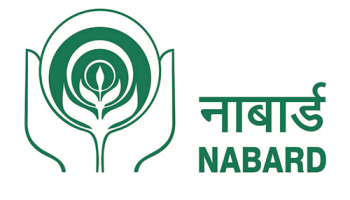Company Registration

The right business structure will allow your enterprise to operate efficiently and meet your required business targets. In India, every business must register themselves as part of the mandatory legal compliance. A Private Limited Company is the most common type of Company Registration in India, which is governed by the Companies Act 2013 under the Ministry of Corporate Affairs (MCA). It is […]
India’s textiles sector to grow to USD 350 Billionby 2030: India’s Trade Data

India’s textiles sector is set for significant expansion, with an 11% year-on-year growth in Ready-Made Garments (RMG) of all Textiles exports, as per India’s trade data of August 2024, signaling a bright future. The Textiles sector in the country is expected to grow to USD 350 billion by 2030, driven by India’s inherent strengths and […]
NABARD released Second All India Rural Financial Inclusion Survey (NAFIS) 2021-22

NABARD has published the findings from its second All India Rural Financial Inclusion Survey (NAFIS) for 2021-22, which offers primary data based on a survey of 1 lakh rural households, covering various economic and financial indicators in the post-COVID period. Recognizing the vital role of financial inclusion for economic development, NABARD conducted the inaugural survey […]
GST Return Due Date

The government announces GST return filing due dates from time to time to maintain taxation in line with respective clearance. Also, the main effort is to alert the taxpayers regarding the GST return filing due dates to make them neglect any penalty or interest.the GST due dates calendar of October 2024 for all the registered […]
Gaushala Registration

Gaushala registration in Rajasthan is a formal process managed by the Directorate of Gopalan (Department of Cow Protection), which ensures that the shelters for cows (Gaushalas) meet the necessary standards for their care and protection. Eligibility Criteria Organization Type: The applicant must be a registered entity like a trust, society, or non-profit organization that works […]
Maternity Benefit Act, 1961

The Maternity Benefit Act, 1961 is a legislation that protects the employment of women at the time of her maternity. It entitles women employees of ‘maternity benefit’ which is fully paid wages during the absence from work and to take care of her child. The Act is applicable to the establishments employing 10 or more […]
District Industries Centres in Tamilnadu

District Industry Center (DIC) under the Directorate of Industries and Commerce offers a subsidy loan scheme for young professionals under the guidance of the Ministry of Social Justice and Empowerment. Established in 1978, District Industries Centers’ program was initiated by the Central Government to promote tiny, cottage, village, and Small Scale Industries (SSIs) in smaller towns and […]
FD Calculator

A Fixed Deposit (FD) Calculator calculates the FD maturity value and interest income based on principal amount, FD interest rates and tenure. Online FD calculators of some banks additionally allow users to calculate their FD interest income based on the interest payout options (monthly, quarterly, half-yearly, yearly and reinvestment). How can a Fixed Deposit calculator […]
TDS on Contractor Payment

Section 194C states that any person responsible for paying any sum to the resident contractor or sub-contractors for carrying out any work (including the supply of labor), in pursuance of a contract between the contractor and the following: The Central Government or any State Government Any local authority Any Statutory Corporation Any corporation established by […]
Which ITR Should I File

TR filing is mandatory for individuals who have an annual income exceeding the basic exemption limit. There are various types of Income Tax return forms that taxpayers have to fill to complete e filing Income Tax Return process. These ITR forms are classified on the basis of the nature of income. However, the ITR form […]